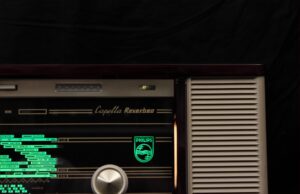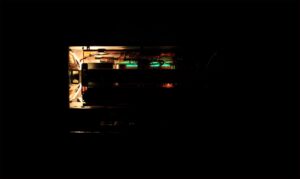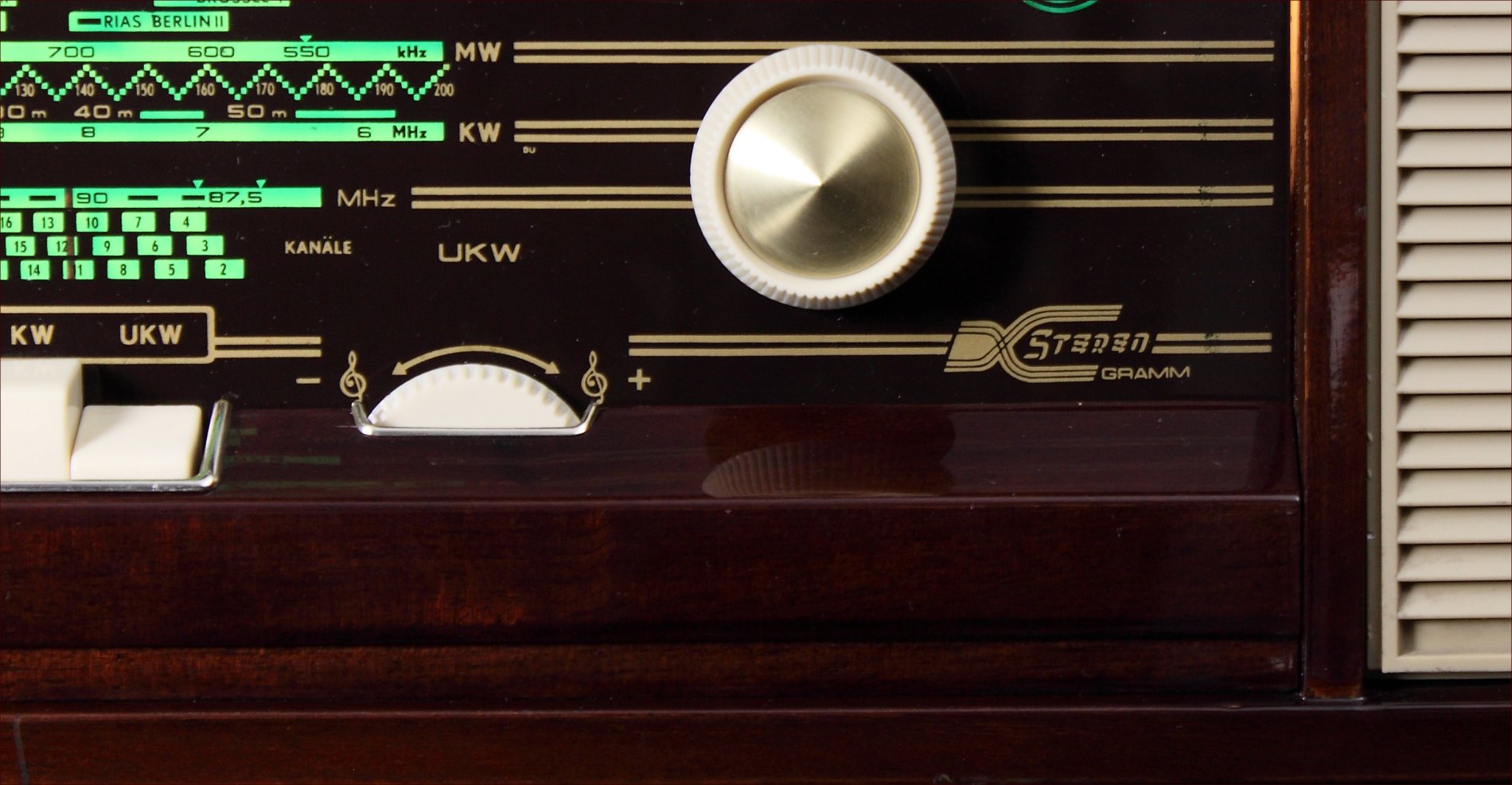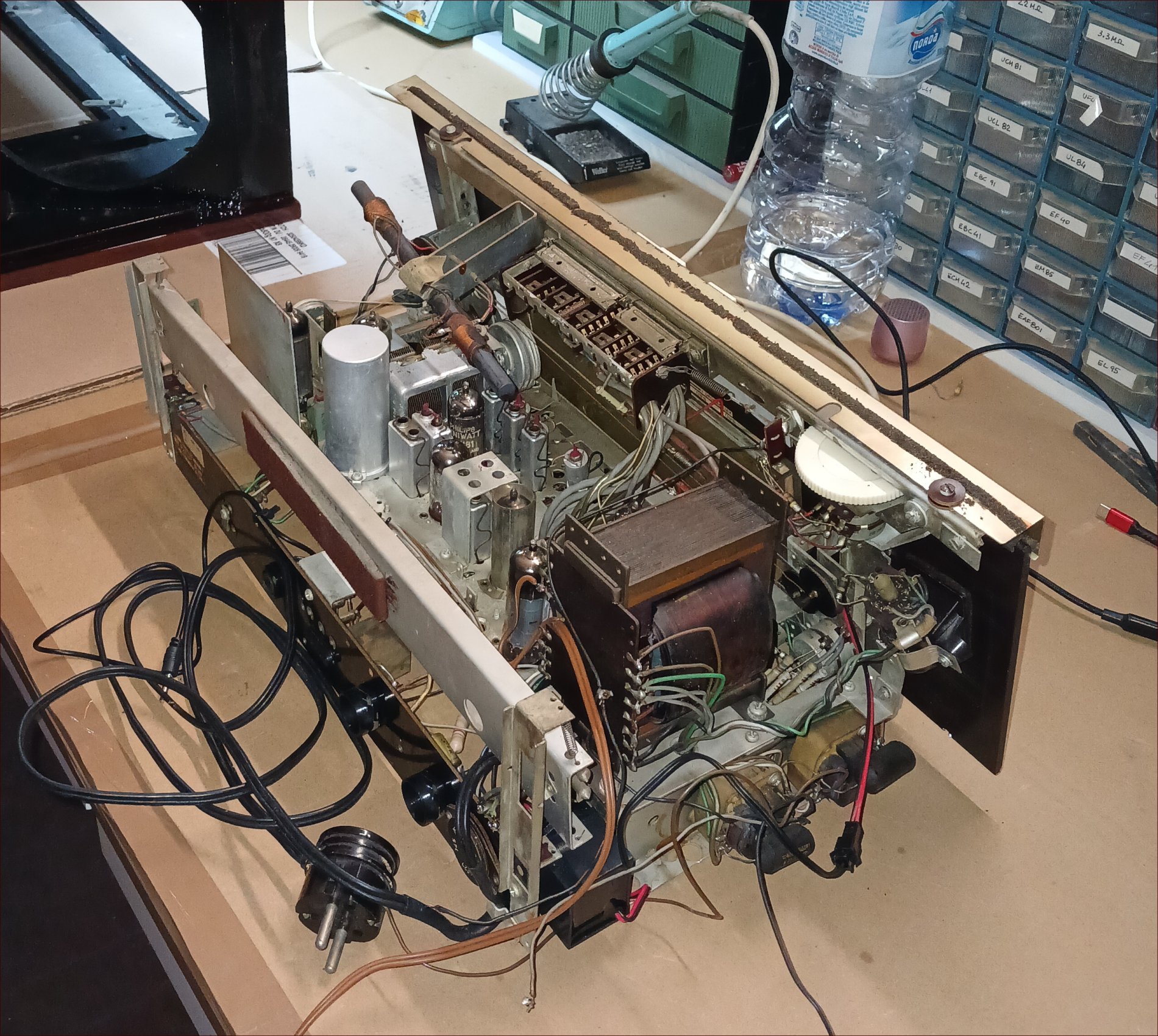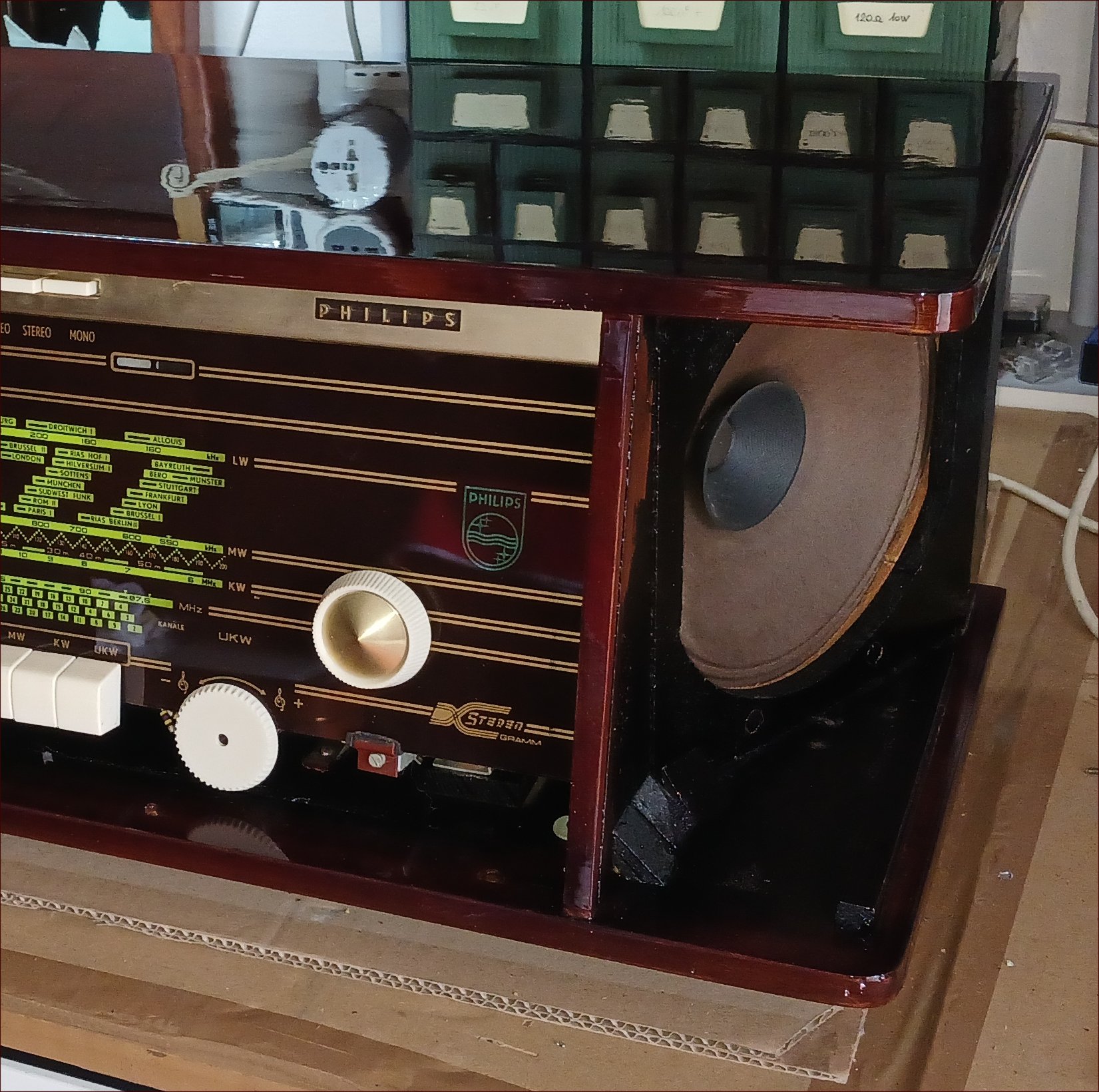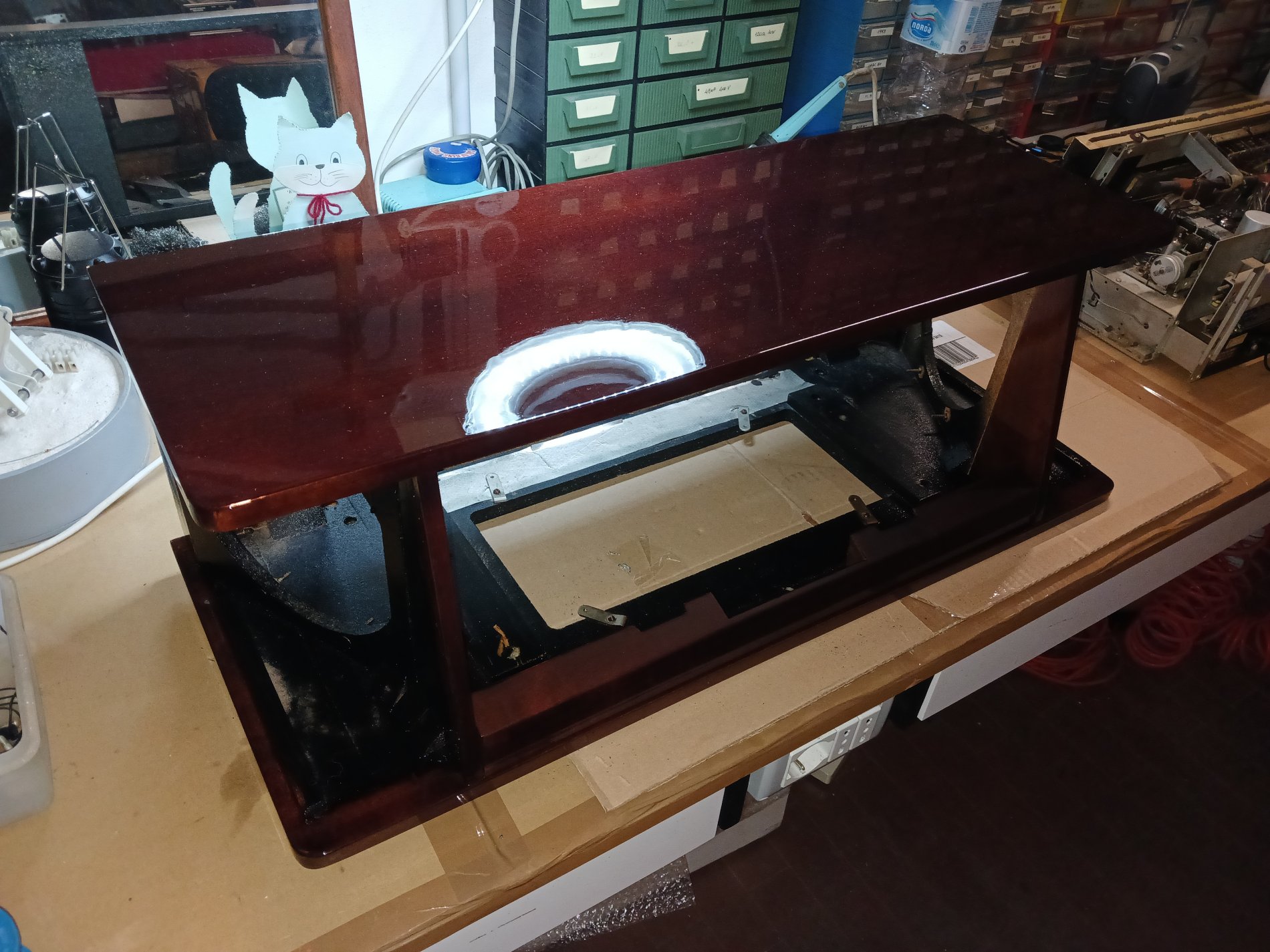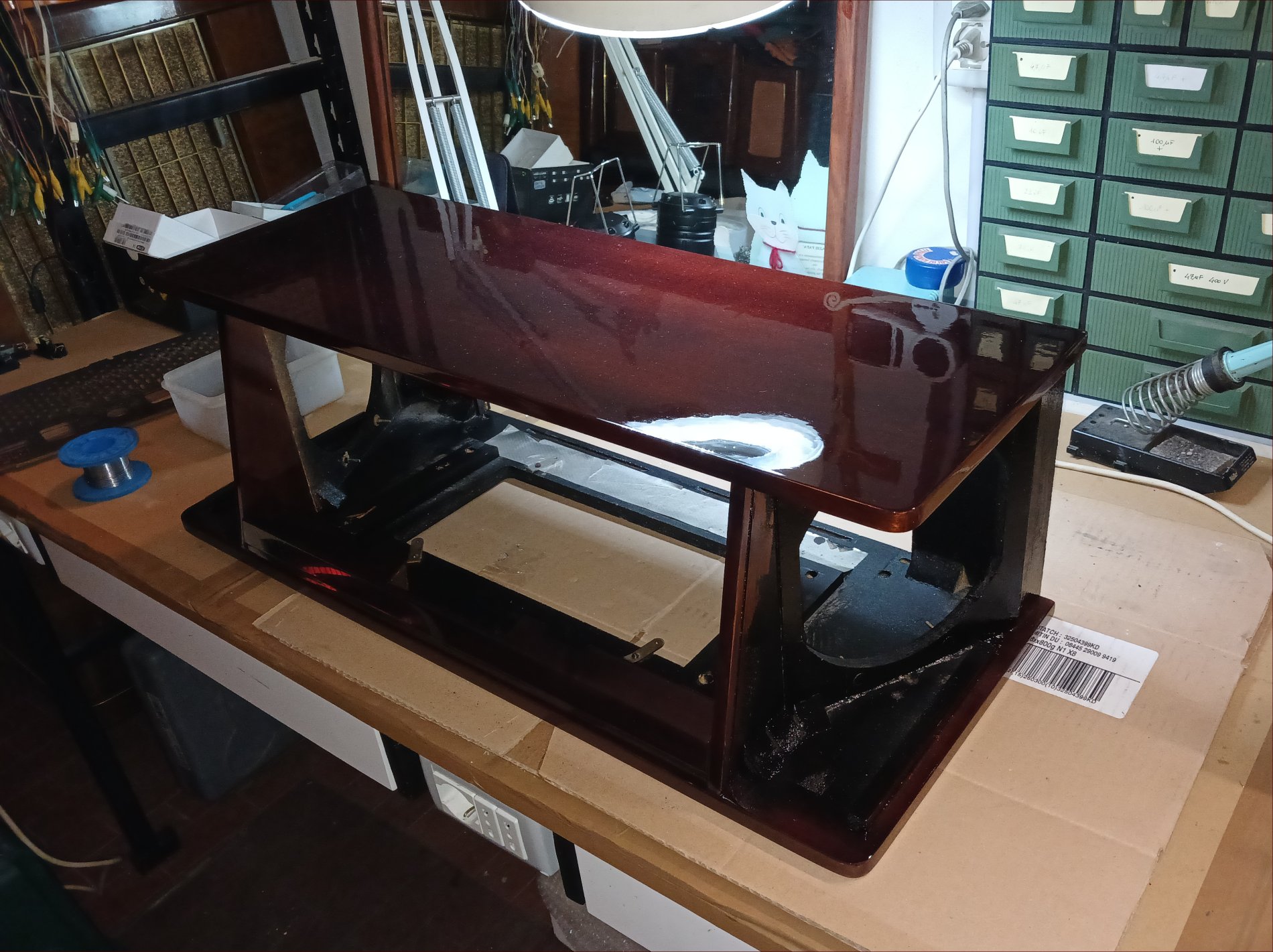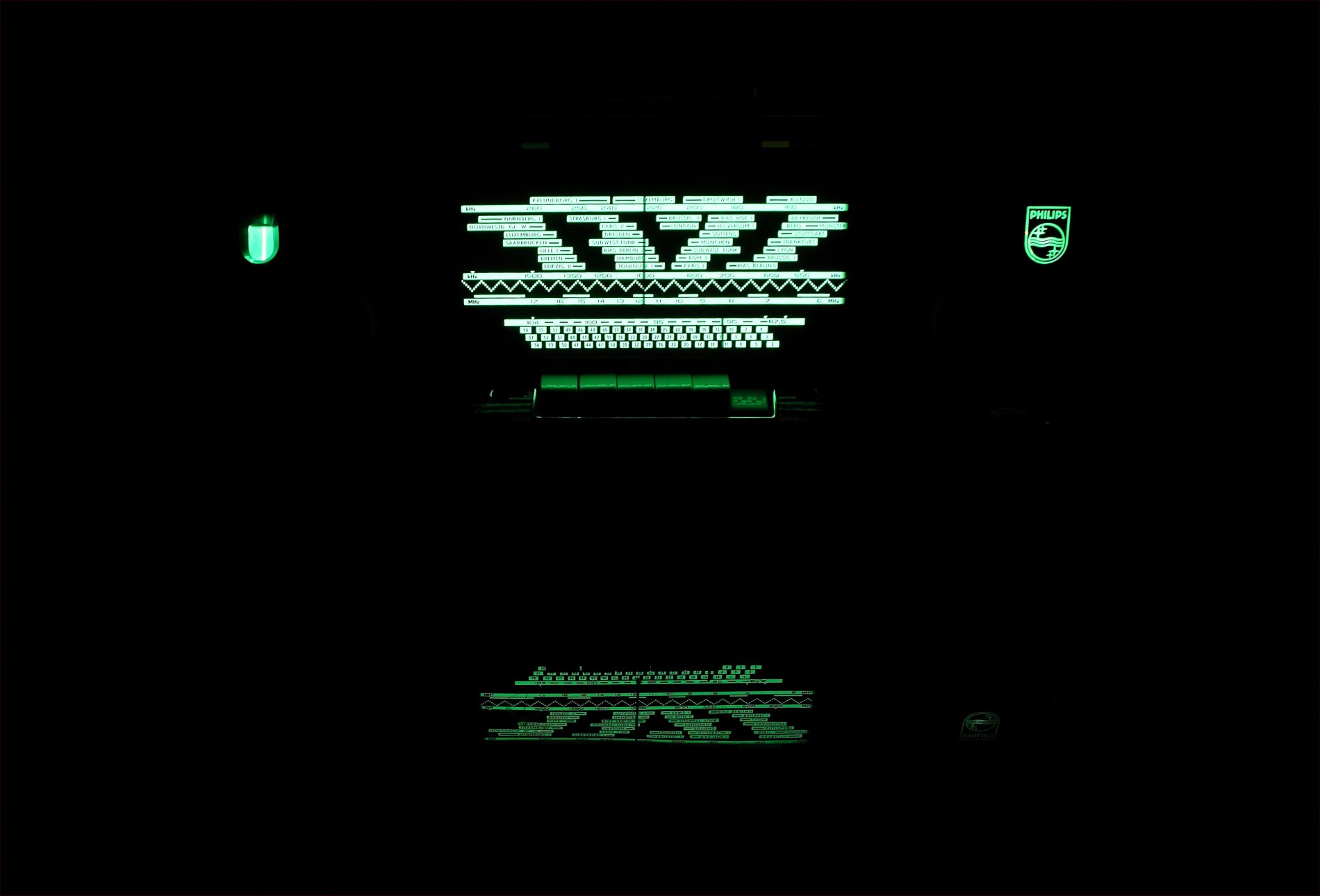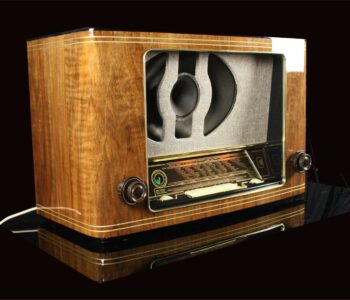 ready for sale - cn
ready for sale - cn
Philips C…
- by giovanni
PHILIPS CAPELLA REVERBEO B7X43A - B7X14A
In this review we analyze two very similar devices, the Philips Capella Reverbeo B7X14A and the Philips Capella Reverbeo B7X43A.
The two models are completely identical except for the fact that the B7X43A has a stereo decoder, while the B7X14A does not.
With the B7X14A, therefore, FM stereo transmissions are received in mono.
The front differs due to the presence of the stereo indicator in the B7X43A.
Both models are equipped with two Class A final stages, with an EL84 for each channel. Therefore, with both, stereo listening is provided when the source is a turntable, a tape recorder, a CD player or Bluetooth.
The most important feature on both models is the presence of the electro-mechanical reverb circuit, which can of course be excluded by a button on the front. The Philips reverb will be analyzed in detail below.
These two top-class Philips devices are the only German-made radios equipped with reverb. Saba, Grundig and Philips included reverb as an option on some rare top models of their large radio cabinets, but no classic radio was equipped with reverb.
The effect of reverb is very pleasant especially in sacred music, choirs and chamber music. In rock and jazz music, however, it generates excessive confusion in my opinion and it is preferable to exclude it with the appropriate button.
When you insert the reverb, the two channels are automatically connected and the playback becomes monophonic.
One last warning, pressing the HI-FI or SPRACHE buttons inserts equalizations set by the manufacturer, which are not configurable, and the Bass and Treble knobs no longer have any effect.
The presence of reverb, the double cone speakers arranged at an angle and the futuristic line for the time make it one of the most appreciated and sought-after devices of the Philips production of the time.
The first track is a Reveberation Example. This is a recording of any FM broadcast where you want to hear the reverb effect. The recording starts with the reverb on, then you hear a "Stack!" and the reverb is turned off, then turned on again and so on. This way you can appreciate the level of reverb that Philips has planned for this device. In fact, although it is clearly a distortion of the sound, it is very interesting, the songs seem to come from inside a large room, or a church, and the effect is incredibly pleasant.
The second track performed by Abdullah Ibrahim is called Cape Town to Congo Square 1. Adolph Johannes Brand (Abdullah Ibrahim) is a South African pianist and composer. His music often draws inspiration from the music he listened to in his childhood in the multicultural port areas of Cape Town, ranging from traditional African songs to church gospel, Indian ragas, and more modern jazz. She manages to blend American jazz, Duke Ellington's big band compositions with the revolutionary innovations of Ornette Coleman and the avant-garde of the 60s.
The third song is performed by Ella Ronen & Sam Cohen, it is called I just want to see you. It is part of the album “The Girl With No Skin”. A very interesting project where the singer, poet and activist addresses the burning issue of being a woman today, with all the conflicts and contradictions, the rediscovered strength and weakness. "I just want to see you" talks about the couple and the difficulties of being yourself and being a couple when instead we are continuously encouraged to play roles. A very sweet song that gives energy and hope. "I don’t want to be your mother / I don’t want to be your muse / I don’t want to take your freedom / I don’t want to make you choose / I just want to see you"
The fourth song performed by Buena Vista Social Club is the famous Amor de loca juventud. (Love of the Crazy Youth) written and composed by Rafael Ortiz in the 30s is a song with influences from black music from the neighboring United States, very popular in Havana in those years. Buena Vista Social Club was the name of a club in Havana (Cuba), whose entrance was reserved for people of color. Almost forty years after the club closed, a group of Cuban musicians merged into the Afro-Cuban All Stars. The Californian guitarist Ry Cooder also participated in the initiative. The album Buena Vista Social Club was released in 1996. In 1999, Wim Wenders directed a documentary about the entire story of the production and the members of the orchestra, also entitled Buena Vista Social Club.
The fifth song performed by Francis Poulenc is his Stabat Mater Dolorosa. In late 1950 Francis Poulenc began writing the Stabat Mater, FP148 for soprano solo, mixed choir and orchestra dedicated to the memory of the stage designer Christian Bérard, a dear friend of Poulenc, who had died the previous year. s Poulenc had shared with Bérard the experience of rediscovering his faith after going on a pilgrimage to the Sanctuary of Rocamadour. This is one of Ozawa's historic Boston recordings. The pure and crystalline voice of the American soprano Kathleen Battle marries perfectly with Poulenc's sacred pieces. The Stabat Mater "Stava la madre" is a Catholic sequence from 1200 attributed to Jacopone da Todi. The first part of the sequence begins with the words Stabat Mater dolorósa and is a meditation on the sufferings of Mary, mother of Jesus, during the Passion and crucifixion of Christ.
-
BLUETOOTH
Bluetooth receiver embed
-
MULTI PLATFORM CONNECTION
Each radio is equipped with a cable for connection to any digital device.
TUBESOUND IMPROVEMENTS
– Bluetooth receiver embed – The unit is equipped with a BLUETOOTH receiver powered directly by the receiver power supply. This makes it possible to control the amplifier from any external digital device as an IPAD, a Smartphone, or a sophisticated multimedia station. So you can hear your preferred web station or your lossesless file without cables on the room. Wireless Receiver can be equipped upon requests.
– Multi Platform Connection – A customized adaptation cable to connect any digital device as Iphone, Smartphone, Laptop, CD Player etc. will be provided with this radio. This special cable suits the different impedances between the modern equipment and the receiver. Furthermore the two stereo channels flow into one without increasing the load to the input unit.
HISTORY
In 1891, the brothers Gerard and Anton Philips, started to produce the first incandescent bulbs in Eindhoven.
Later, Philips specialized in the production of electro- medical equipment, and in 1918 introduced the first X-ray tube.
In the following years, Philips began specializing in the broadcasting industry. In 1932 the company succeeded in selling over one million radio equipment and became the world’s first producer.
During the Second World War, Philips transferred to the Netherlands Antilles, and returned to the Netherlands at the end of the conflict.
In the second post- war period, began the production of the first televisions, then the launch of the music cassettes in 1963 and the production of the first integrated circuit in 1965.
In 1982 Philips launched with Sony the first compact disc player.
In 1984 Philips acquired the control of the German Grundig.
In the 90's Philips faced a financial crisis.
In 1991 it inserted on the market the Video CD and it is one of the first companies in the world to develop high definition television.
In 1999 Philips established a joint venture with LG Electronics, named LG Display, which ends in 2009.
In 2006 together with Sony launched the first Blu-ray.
In 2009 Phillips launched the first full-HD LCD TV in 21:9 format.
Phillips holds 48,000 registered patents.
Currently, the production is focused on low- energy lighting products and LED systems and services for diagnostics and production of medical devices.
MAIN FEATURES
Year of production: 1963/64
Superheterodyne IF 452/10700
6 AM Circuits
11 FM Circuits
Wavebands: Medium Waves (OM), Long Waves (OL), Short Waves (SW), FM (UKW)
Speakers:
2 double cone wideband
Dimensions (LW): 712 x 265 x 292 mm / 28 x 10.4 x 11.5 inch
Net weight: 14 kg / 30 lb 13.4 oz
10 Valves (Eq. 17): ECC85 ECH81 EF89 EBF89 EM80 EAA91 ECC83 2xEL84 EZ81
Rotating ferrite antenna.
Reverb switchable

REVERB
This type of reverb was developed by Bell Labs in the 30s for the organs of Laurens Hammond to obtain a spatial effect that aimed to replicate the natural reverb of a church even in the small rooms of a house. In the 60s and later they were used in the amplifiers for musical instruments of all the most famous manufacturers, Fender, Vox, Marshall and others.
The mechanical part of the spring reverb is composed of three fundamental elements, the Input and Output Transducers, the Transmission Springs and the Suspension Springs. Essentially the audio signal is sent to the piezoelectric transducer located at one end of the transmission spring, the vibrations reach the transducer located at the other end of the springs after being subjected to oscillations, reflections and delays. The output of the transducer is sent mixed with the direct sound source to create the final output signal.
PHILIPS decided to implement this incredible mechanism in its most prestigious devices, the CAPELLA REVERBEO B7X43A and B7X14A.
The reverb units used by Philips are of the double spring type, which unlike the triple spring type return a more evanescent and characteristic sound, not obtainable with digital convolution reverb algorithms.
A button on the front allows you to insert/disinsert the reverb circuit. Inserting the reverb automatically switches the channels to monophonic. Listening to both music and speech with the reverb inserted is a fascinating and fun experience.
TONE CONTROLS
The tone control system is very efficient. The individual tone knobs act on both channels.
TUNING INDICATOR
The tuning indicator has been replaced with a new one.

SPEAKERS
The speakers used on both channels are the very special AD3800AM.
These are 20 cm bicone speakers with an impedance of 800 ohms.
The frequency response extends from 70 to 18000 Hz, and they are equipped with a 9500 Gauss magnet.
The speakers are mounted facing the front corners in order to accentuate the stereophonic effect when the listener is positioned at least one meter away from the radio.
There are several options for connecting external speakers. Naturally, any external speakers must also have an impedance of 800 ohms.
It is possible to connect external speakers, excluding or not the internal speakers.
1 - Balance Knob
2 - Left Channel Balance Indicator
3 - Preset EQ for Music Listening
4 - Preset EQ for Speech Listening
5 - Reverb Insertion
6 - Stereo Listening
7 - Mono Listening
8 - Right Channel Balance Indicator
9 - Stereo Station Reception Indicator
10 - Tuning Indicator
11 - Volume
12 - Bass
13 - Power Off
14 - Turntable/Auxiliary Input
15 - Long Wave
16 - Medium Wave
17 - Short Wave
18 - FM
19 - Treble
10 - AM/FM Tuning Control














